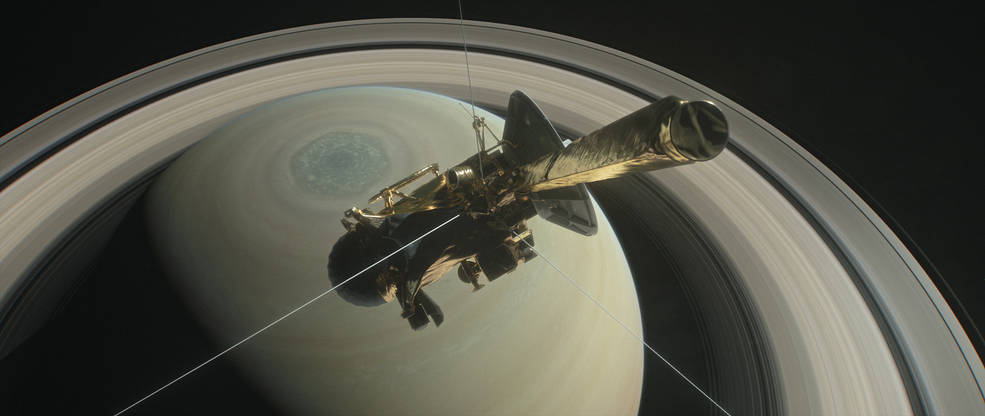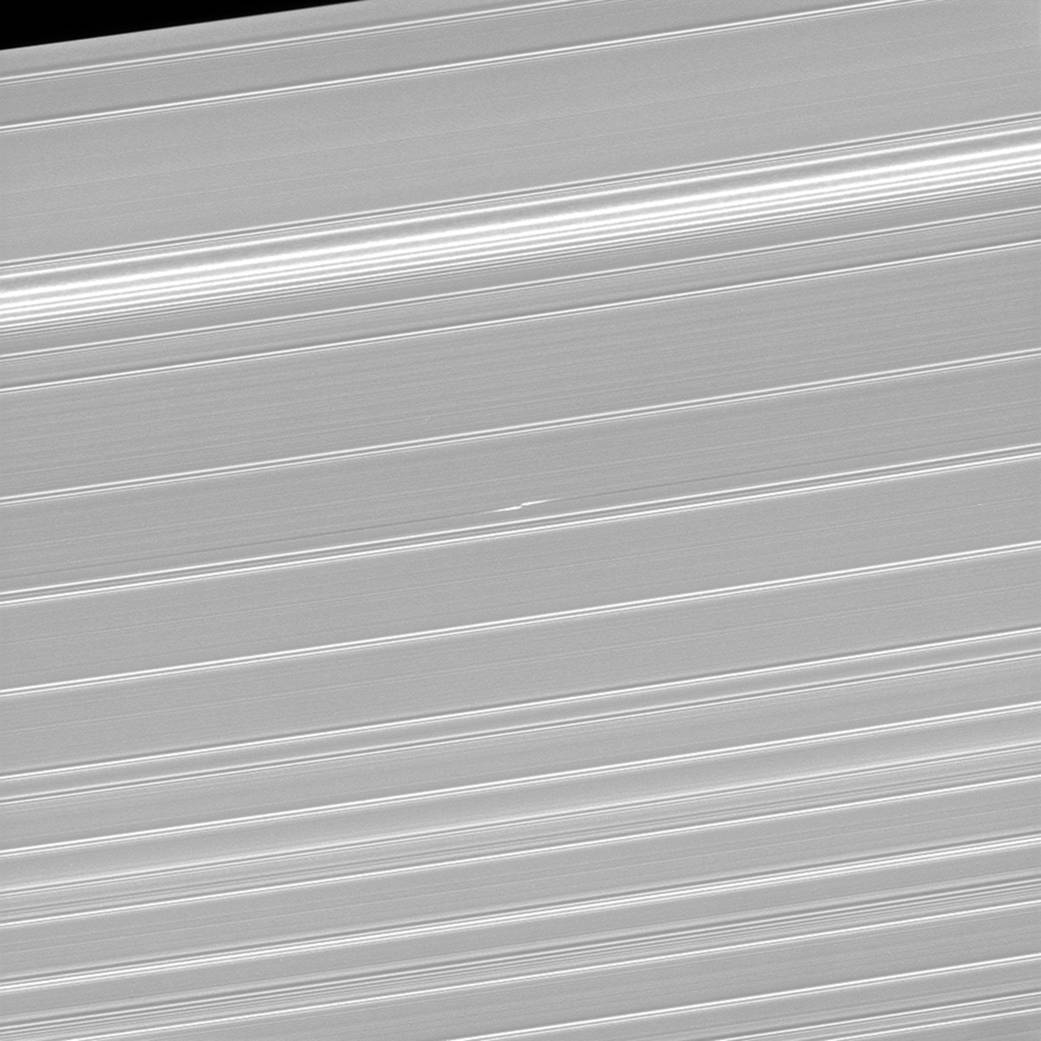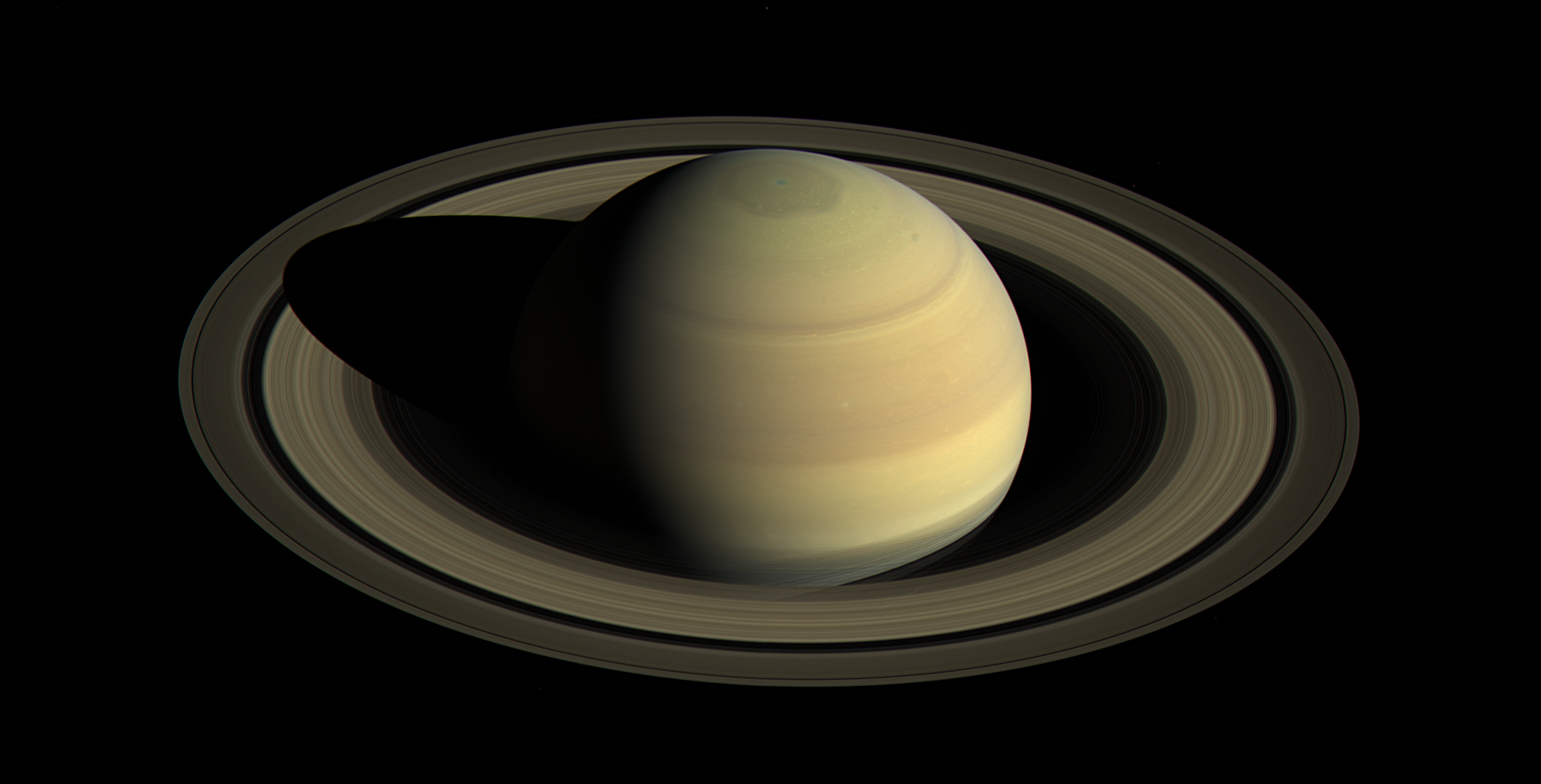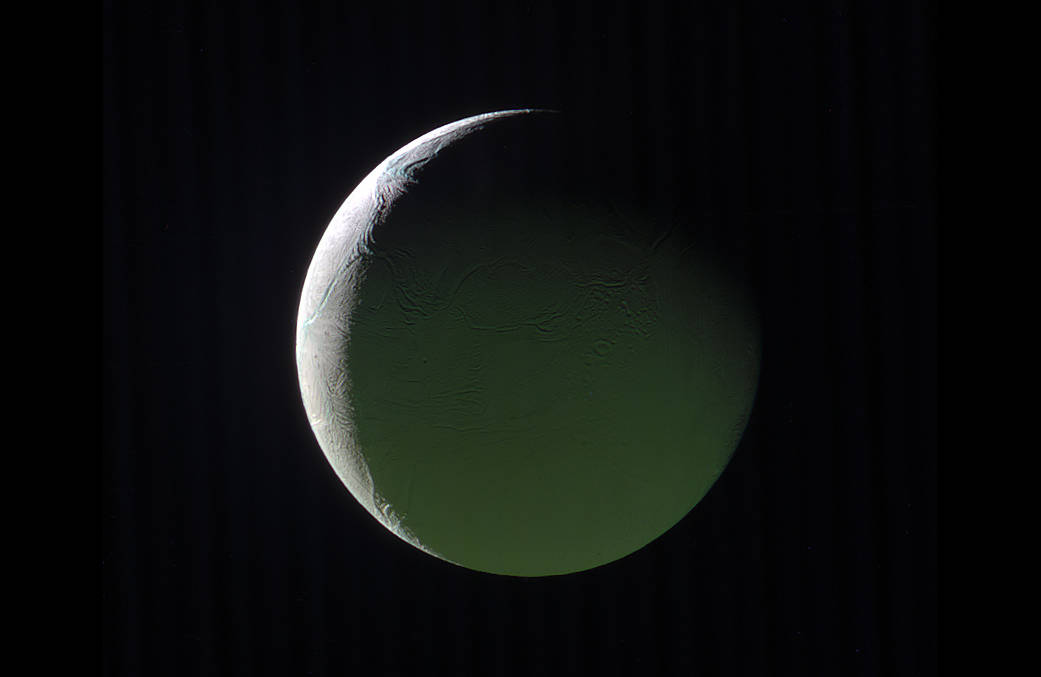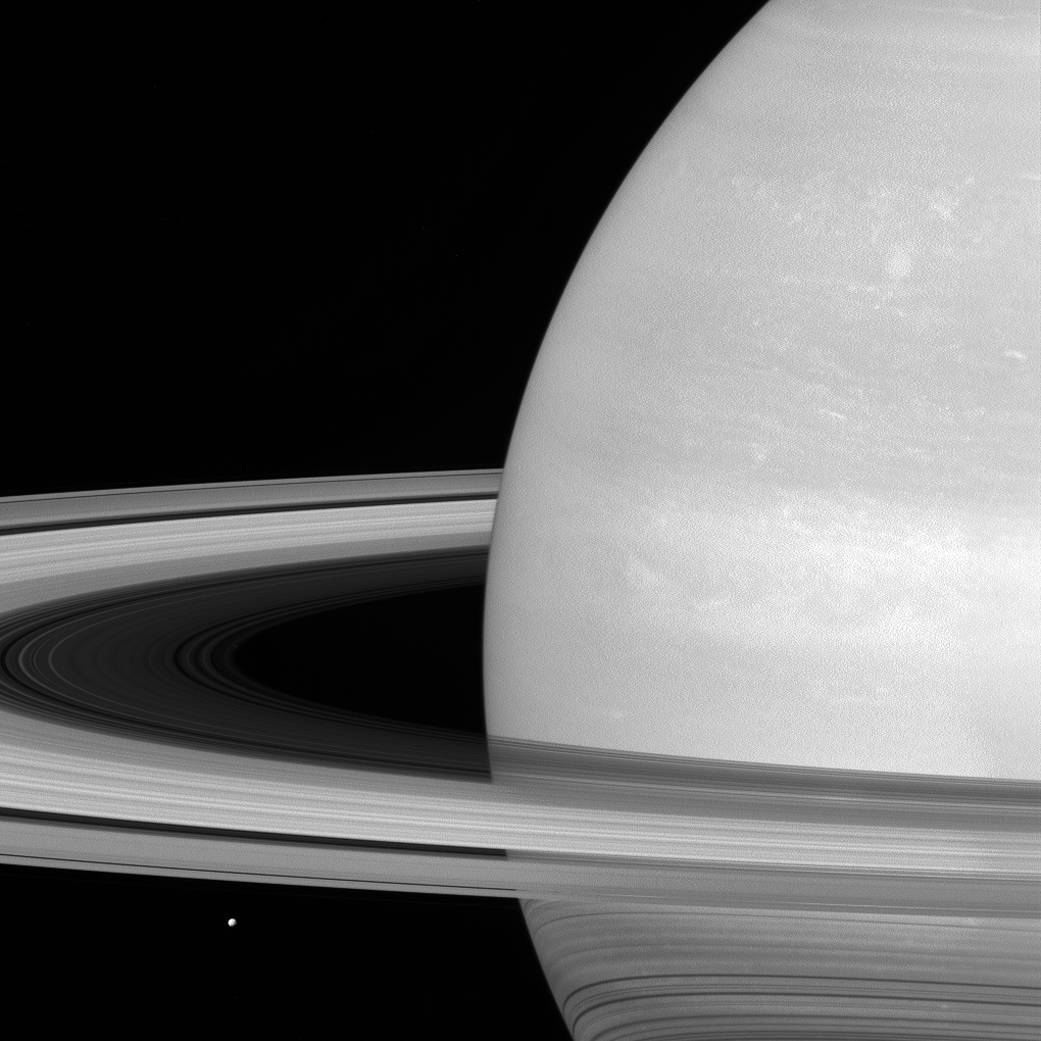長い間わかっていなかった土星時間(1年の長さや1日の長さ)がようやく判明したとNASAが発表しました。
これまで土星本体に計測する際の目印となるものが無いとか、磁場の影響で土星の回転を正確に計測できなかったそうです。
今回、土星の環の精密観測からついに土星の回転速度を計測することができて、土星時間が判明したとのことです。
土星の1年:地球の29年に相当
土星の1日:10時間33分38秒
詳細は2019年1月17日の「Astrophysical Journal」誌に掲載されているそうです。
以下にNASAのオリジナル記事と和訳(参考)を掲載します。
Scientists Finally Know What Time It Is on Saturn
NASAのオリジナル記事:https://www.nasa.gov/feature/jpl/scientists-finally-know-what-time-it-is-on-saturn
Credits: NASA/JPL-Caltech/Space Science Institute
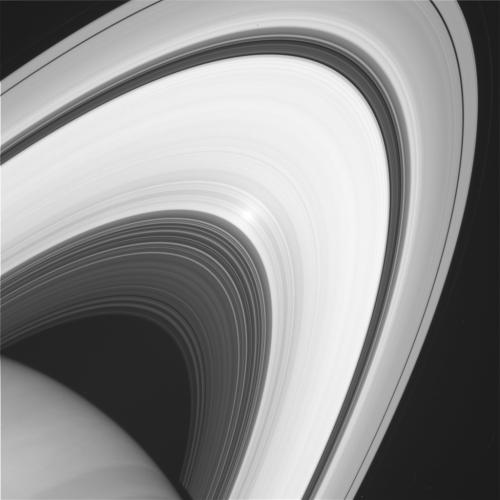
Using new data from NASA’s Cassini spacecraft, researchers believe they have solved a longstanding mystery of solar system science: the length of a day on Saturn. It’s 10 hours, 33 minutes and 38 seconds.
NASAの探査機カッシーニからの新しいデータを得た研究者たちは、これで太陽系の長年の謎である 「土星の1日の時間」 が解決したと確信しました。それは10時間33分38秒でした。
The figure has eluded planetary scientists for decades, because the gas giant has no solid surface with landmarks to track as it rotates, and it has an unusual magnetic field that hides the planet’s rotation rate.
この答えは何十年もの間、天文学者の挑戦を阻み続けてきました。なぜなら、土星はガスの巨大惑星であるため回転する際にトレースできる目印になるような固い地表を持たない上に尋常でない磁場があり、天体の回転の状況を確認することが困難であったためです。
The answer, it turned out, was hidden in the rings.
しかし、答えは土星の環の中に隠されていたのです!
During Cassini’s orbits of Saturn, instruments examined the icy, rocky rings in unprecedented detail. Christopher Mankovich, a graduate student in astronomy and astrophysics at UC Santa Cruz, used the data to study wave patterns within the rings.
カッシーニが土星を周回している間に、搭載している観測装置で氷や岩でできている土星の環を過去に前例がないほど詳細に観測したのです。カリフォルニア大学サンタクルーズ校の天文学と天体物理学の大学院生であるクリストファー・マンコヴィッチは、そのデータを使って土星の環に表れている波のパターンを解析しました。
“Particles throughout the rings can’t help but feel these oscillations in the gravity field,” Mankovich said. “At specific locations in the rings these oscillations catch ring particles at just the right time in their orbits to gradually build up energy, and that energy gets carried away as an observable wave.”
「土星の環全体の粒子は重力場で振動していること以外のヒントにはなりませんでした。」とマンコビッチは述べました。 「土星の環の特定の場所で振動がちょうどいいタイミングでエネルギーを蓄積し、そのエネルギーが軌道上から観測できるような波となって表れたのです。」

Mankovich’s research, published Jan. 17 by Astrophysical Journal, describes how he developed models of Saturn’s internal structure that would match the rings’ waves. That allowed him to track the movements of the interior of the planet — and thus, its rotation.
1月17日付の「Astrophysical Journal」誌に掲載されたマンコヴィッチの研究は、彼がどのようにして土星の環の波と土星の内部構成が一致するモデルを構築したのかについて記載しています。それにより土星内部の動き、そしてその回転を究明することができたのでした。
The rotation rate of 10:33:38 that the analysis yielded is several minutes faster than previous estimates in 1981, which were based on radio signals from NASA’s Voyager spacecraft.
この解析で得られた10時間33分38秒の回転速度は、NASAのボイジャー探査機により推定した1981年の推定値より数分早いものでした。
The analysis of Voyager data, which estimated the day to be 10:39:23, was based on magnetic field information. Cassini used magnetic field data, too, but earlier estimates ranged from 10:36 all the way to 10:48.
土星の一日が10時間39分23秒であると推定したボイジャーのデータは磁場の観測に基づいていました。 カッシーニも当初は磁場のデータを使用して推定していましたが、その時の推定値は10時間36分から10時間48分の範囲でした。
Gretchen McCartney
Jet Propulsion Laboratory, Pasadena, Calif.
818-393-6215
gretchen.p.mccartney@jpl.nasa.gov
JoAnna Wendel
NASA Headquarters, Washington
202-358-1003
joanna.r.wendel@nasa.gov
2019-005
Last Updated: Jan. 19, 2019
Editor: Tony Greicius



